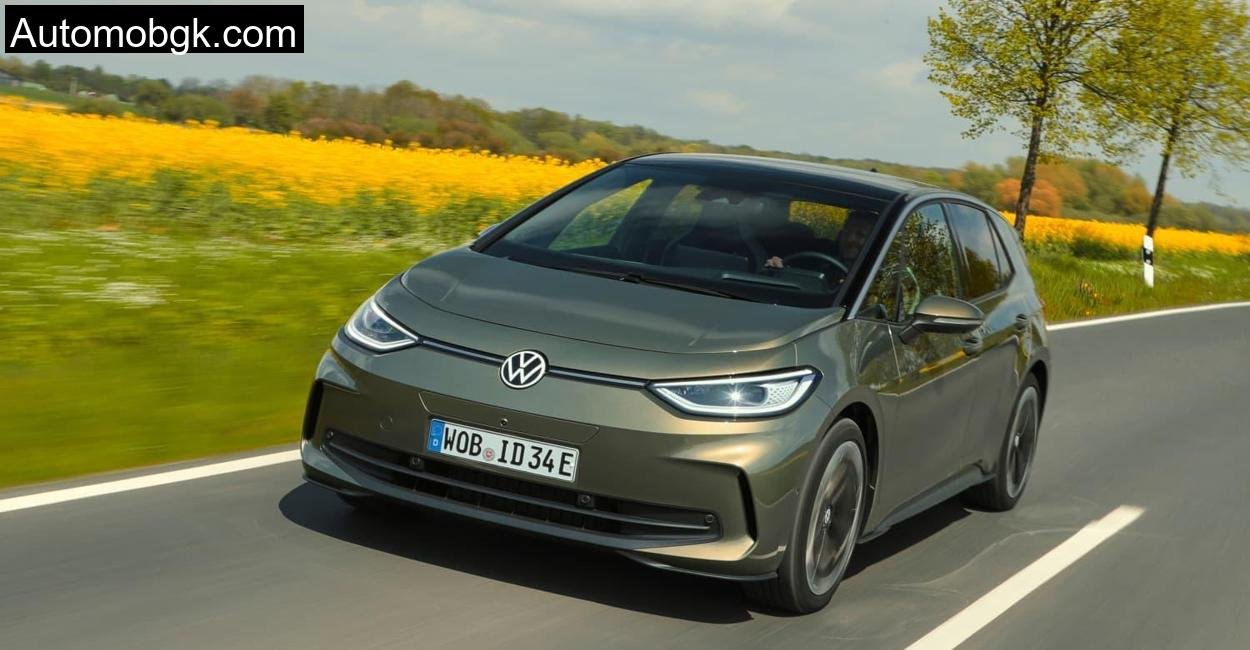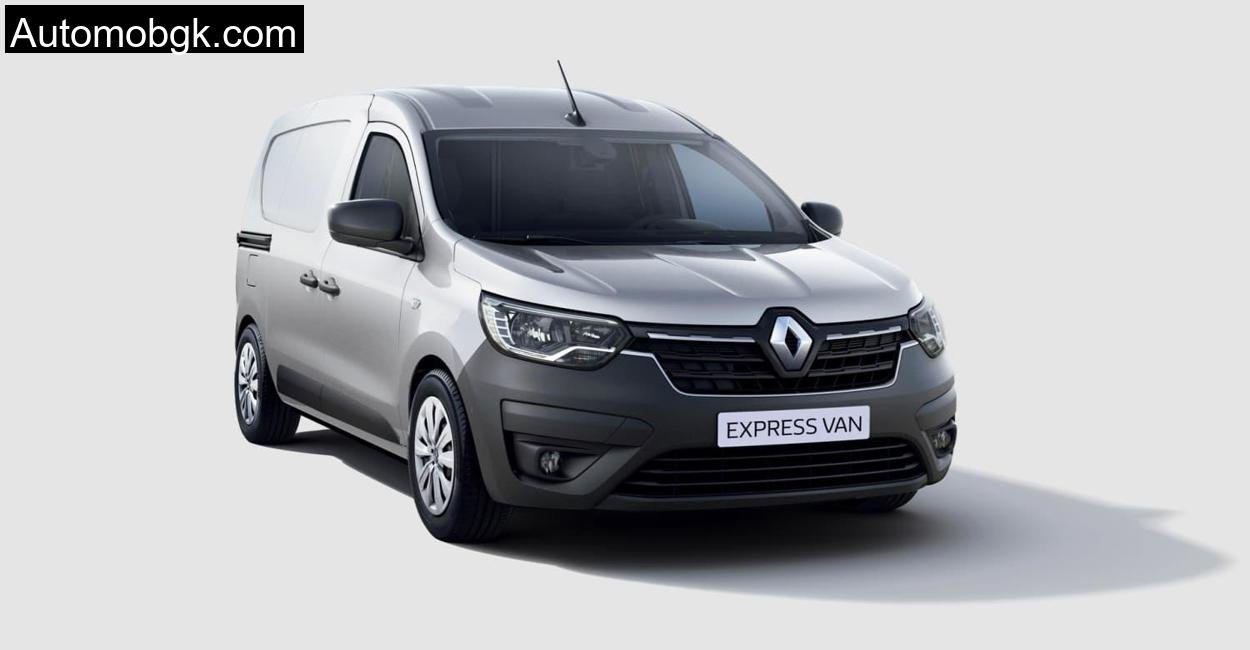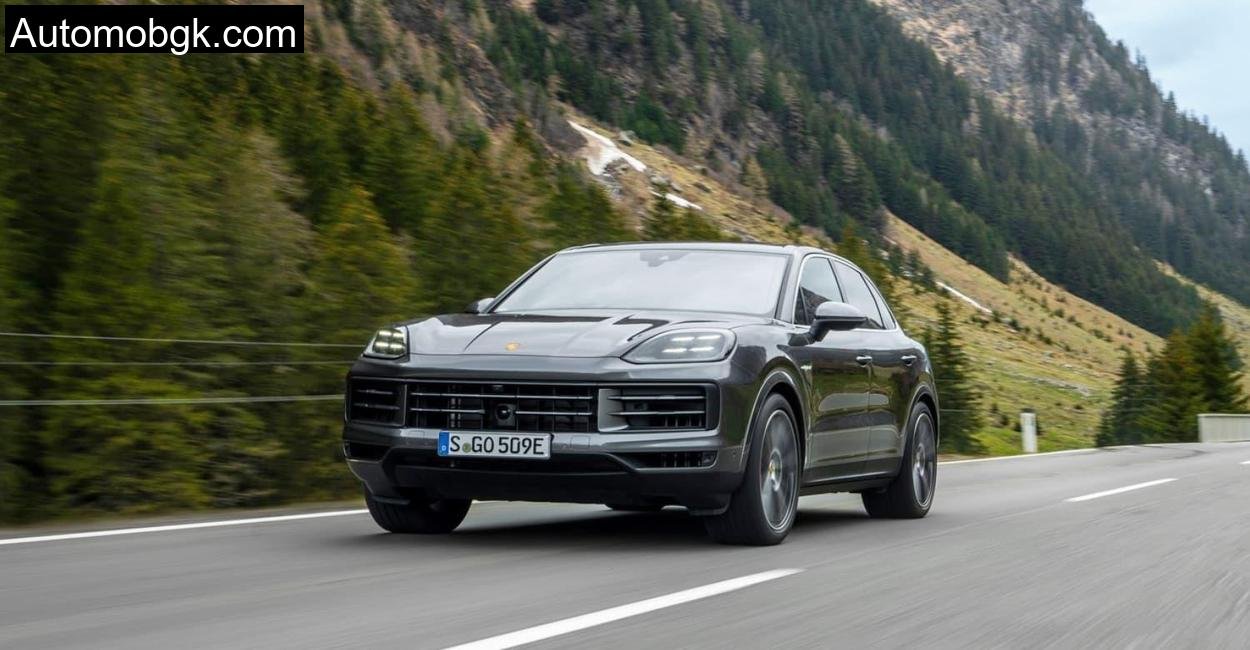Three years after its debut, the ID.3 re-emerges not as a revolution but as a refinement. I’d driven the pre-facelift model before, its quirks as prominent as its promise, but this time, VW claims to have heard the critics. Improved aerodynamics, better materials, and more capable software were all on paper. The question: would the new ID.3 finally feel complete in the real world?
VW ID.3 Facelift: This is What the Model Update Brings
Even before slipping behind the wheel, the changes are obvious. The front end is softer, more organic. Gone is the awkward black trim under the windshield, replaced with smooth, body-colored surfacing. It looks more mature now, like a concept car that’s finally made peace with reality.
Out here in Osterwald, where the roads blur into shadows of spruce trees, aerodynamics matter less than comfort, and it’s the comfort that hits you first. The seats, now clad in microfiber made from 71% recycled content, are plush yet supportive. Even after hours of hill climbs and regen-braking descents, my back felt unbothered, not always a given in modern EVs.
VW claims a drag coefficient of 0.263 now. That, combined with the active electric radiator shutters and revised wheel arch airflow, makes it more slippery through the air. But more than numbers, it feels better settled on the road.
Slider Still Unlit
And yet, some quirks remain. The touch sliders for volume and temperature are still unlit, yes, in 2025. Pre-dawn starts meant I was adjusting heat by memory and guesswork. VW promises a fix with an updated display next year, but until then, it’s a baffling oversight.
That said, the new infotainment software is smoother and smarter. OTA updates are now supported, and the redesigned charging interface is logically structured. Plug & Charge worked flawlessly during my time, just plug in and walk away. No cards. No fiddling.
The route planner now factors in traffic and battery level dynamically. It didn’t once lead me astray in the forested labyrinth of Osterwald.
The VW ID.3 is Fast and Easy to Handle

Under the skin, the ID.3 remains rear-wheel-drive with a 150 kW (204 hp) electric motor delivering 310 Nm of torque. What’s changed is how this power translates to the road. The facelift hasn’t upped the power, but it’s smoothed out its delivery.
The response is immediate, yet linear. No jerky leaps forward, just a seamless rush, especially from 60 to 100 km/h, where it dispatches overtakes with surprising grace. Think Golf GTI pace, but without the rumble. It feels oddly ghostly, powerful, quiet, competent.
0 to 100 km/h takes 7.9 seconds. Top speed is capped at 160 km/h. But in the tight confines of Osterwald’s lanes, what mattered was the agility. The ID.3 tucks into corners with poise. The optional adaptive damping system manages weight shifts beautifully. It oversteers ever so slightly under load changes, but it’s all easily caught. ESP stays alert but not intrusive.
And that turning circle, just over 10 meters, is brilliant. U-turns on narrow forest roads were drama-free.
77 kWh Battery: 450 km Range in the Test
VW quotes 559 km of range from the 77 kWh battery. In the real-world test, it managed 450 km, impressive, given the conditions. Osterwald’s chilly, damp winter mornings are not kind to EVs, yet I consistently saw around 430-450 km on a full charge with mixed driving.
Consumption averaged 19.2 kWh/100 km, including charging losses. A full charge used 87.0 kWh, putting it among the more efficient electric hatchbacks. On a DC fast charger, I went from 5% to 80% in just under 30 minutes, peaking around 183 kW. Not once did I feel I was waiting too long.
The ID.3 also uses predictive regeneration. Lift off the pedal approaching a curve, and the car decelerates gently, recovering energy. It’s not the full one-pedal experience, unlike a Tesla or even a Nissan Leaf, but it’s intuitive. In B-mode, the car doesn’t come to a complete stop when lifting off, which takes some adjusting. Still, you quickly learn how to flow with it.
ID.3 Interior with Plenty of Space

Inside, the ID.3 feels airier than its footprint suggests. At 4.26 meters long, it’s compact, yet thanks to the flat floor and generous wheelbase, space is cleverly maximized.
I’m just under six feet tall, and with the driver’s seat set for me, I had ample knee room in the back. Headroom is great too, aided by the high roofline. The boot offers 385 liters, decent for the class, and folds flat with the rear seats down.
The center console layout is better organized now. The new door trims, soft-touch surfaces, and eco-materials give it a classier vibe than the older model’s plasticky cabin. No creaks or rattles, even after several rough potholes on the ascent to Osterwald’s crest.Still Weaknesses in Operation
That said, a few software quirks persist. Voice control occasionally lagged. The haptic steering wheel buttons remain over-sensitive, brushing them accidentally while turning switched my playlist mid-corner once. It’s also time VW reconsiders those window switches, which still require button-toggling between front and rear controls. Ergonomically, some legacy annoyances survive.
But credit where due: the updated infotainment is faster, and the app integration, especially for route planning and remote preconditioning, worked seamlessly.
The Materials Have Become More Valuable
VW listened. Where the first ID.3 felt like a prototype rushed to market, this version feels intentional. From recycled microfibers to a plush foam base on the dashboard, everything inside speaks to quality and sustainability. It’s not premium like an Audi Q4 e-tron, but for a mass-market electric hatch, it feels honest, durable, and much better assembled than before.
You won’t find glossy piano black or fake chrome here. Instead, there’s muted trim and a tactile warmth to everything. The seats support your back in all the right places. The door bins are large. The armrest isn’t wobbly anymore.
First Information about the ID.3 GTX
While the standard ID.3 is now a solid contender, VW is preparing to stir the pot further with the upcoming ID.3 GTX. This performance variant will reportedly offer dual motors for all-wheel-drive, a power output of around 250 kW (340 hp), and 0–100 km/h in under 6 seconds.
Think of it as the Golf R of the ID. family, brisker, sharper, and aimed at enthusiasts. If it inherits the refined ride and torque control of the ID.4 GTX, we’re in for something quite special. Expect launch later this year.
Technical Specification
| Specification | VW ID.3 (Facelift 2025) |
| Motor | Rear-mounted electric motor |
| Power Output | 150 kW (204 hp) |
| Torque | 310 Nm |
| Battery Capacity (Net) | 77 kWh |
| WLTP Range (Claimed) | 559 km |
| Test Range | 450 km |
| Acceleration (0-100 km/h) | 7.9 seconds |
| Top Speed | 160 km/h |
| Consumption (incl. charging) | 19.2 kWh/100 km |
| Charging Time (AC 11 kW) | ~8 hours |
| Charging Time (DC CCS 80%) | ~29 minutes |
| Drag Coefficient | 0.263 |
| Boot Capacity | 385 liters |
| Turning Circle | ~10.2 meters |
| Price (Germany) | From €39,995 |
Conclusion
The facelifted VW ID.3 isn’t a dramatic reinvention, it doesn’t need to be. What VW has done is polish a rough diamond. It’s more refined, better built, and more livable.
On the quiet, winding roads of Osterwald, the ID.3 finally came into its own. The instant torque, whisper-quiet cabin, and responsive handling made every climb and descent feel natural. It has matured. It’s no longer trying to be something it’s not. Instead, it proudly plays the role of an efficient, practical, and increasingly enjoyable electric hatch.
There’s still room to grow, operational quirks and UX decisions still hold it back slightly, but this facelift puts the ID.3 exactly where it should’ve been at launch: a worthy successor to the Golf for the EV age.
Is the VW ID.3 a good long-distance EV?
Yes, especially with the 77 kWh battery. Real-world range is around 450 km, and with fast DC charging, it’s viable for long trips.
Does the ID.3 support one-pedal driving?
Partially. The “B” mode offers increased regen, but it won’t bring the car to a complete stop like in Teslas. Coasting is prioritized in normal mode.
Should I wait for the ID.3 GTX?
If you want all-wheel-drive and more performance, yes. But for daily use, the facelifted ID.3 offers ample power, comfort, and refinement already.







